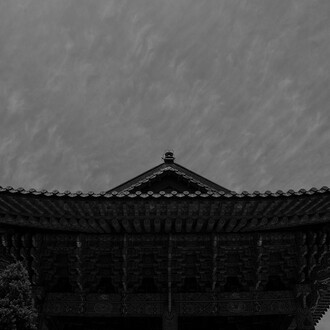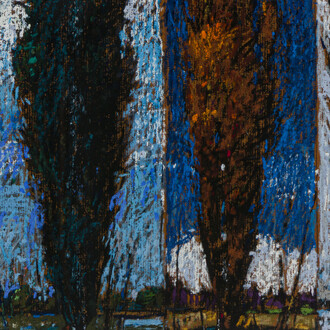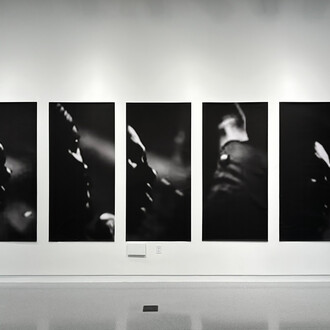On May 9, Hollis Taggart will open an exhibition of recent works by five contemporary abstract painters, including Ted Gahl, Clare Grill, Margaux Ogden, Gary Petersen, and Matt Phillips. Titled Highlight: The High Line, the exhibition features focused explorations of each artist’s practice. While each artist is distinct in their vision and approach, subtle thematic through-lines do emerge as one explores the works in dialogue with each other, including interests in the relationships between figuration and abstraction and the significance of repetition and erasure within contemporary abstract practice. Curated by Paul Efstathiou, an independent curator and art dealer with whom the gallery has collaborated on several previous "Highlight" exhibitions, "Highlight: The High Line" will be on view through May 31 at Hollis Taggart’s Project Space at 507 W. 27th Street.
“We are delighted to be partnering with Paul once again on a "Highlight" presentation, which as a series focuses on exploring the work of and developing new audiences for a wide range of artists, especially contemporary painters. The range of creative vision and technique across the featured artists is particularly exciting, and captures well the ongoing relevance of painting within contemporary practice,” said Hollis Taggart. “This exhibition also provides a dynamic counterpoint to the solo presentation in our primary Chelsea space on the work of Knox Martin, who at age 96 is still producing new paintings that build on dialogues from across his nearly seven-decade career.”
Further information about each featured artist as well as curator Paul Efstathiou follows below.
Ted Gahl has said, “Paintings to me are the biography of a painter, just not in the form of a resume. It is a clear and tangible indication of what they were doing and seeing, suspended in time. You’re looking at a performance that you weren’t there to witness yourself.” Many of Gahl’s abstract works are influenced by his memories and experiences—ruminations on scenes that he has been painting and re-painting since childhood. Defying any easy categorization, Gahl melds elements of figuration with bold, emotive, and even at times aggressive free-form gestures. The cohesion of these modes is further amplified in some of his large-scale canvases in which Gahl incorporates found objects, adding another physical and conceptual dimension to the work. Interested in the monochrome and the underpinnings of the Minimalist movement, Gahl often plays with depth and perspective, creating works that at a distance appear flat and still but that on closer inspection reveal inflections of movement and subtle forms and colors.
Clare Grill takes inspiration from intricate, handmade materials like antique lace, quilts, and embroidery. These items become the touchstones for her richly-layered abstract compositions. As she begins her paintings, she allows the canvas, materials, and her environment to guide her hand, considering the ways that light illuminates imperfections in the surface, the direction of dried strokes, and the subtle shadows and lines that appear as the composition develops. Through this process, Grill often paints, scrapes away, and repaints areas of the canvas, sometimes many times, until the final work emerges. In this way, much like the antique pieces that inspire her, Grill’s paintings have a life and history that exists within the surface. Of this, Grill says, “[My paintings] are about secrets; things revealed, and things buried deep; things fading away; and the subtle, the slip, and the in-between.”
Fascinated by the slippage between accidental and planned mark-making, Margaux Ogden’s abstract paintings appear as a tangle of lines, forms, and color fields. Her fluid free-form gestures meld with more precise geometric shapes to create a new visual vocabulary that feels at once foreign and familiar. This sensation is further accentuated by Ogden’s use of color. Inspired by the Minimalist embrace of the monochrome, many of Odgen’s paintings appear as studies into a single color, produced in various degrees of saturation and dilution across her raw, unprimed canvas. Drawn in particular to pastel yellows, pinks, greens, the joyful nature of these colors bely the layered and intense nature of the creation of the painting itself. Of her work, Ogden has said, “One could trace the compositions back to some modernist moment when geometry began to skid. ...the spatial and perspective shifts create a freefall effect, dissolving any system beyond which is contained in the frame.”
Gary Petersen’s paintings are characterized by an exuberant use of color and hard-edged lines and geometric forms. Seemingly precariously stacked, these vibrant shapes appear to move subtly within the framework of canvas—prone to topple over at any moment. This spatial interplay and tension are in part what makes Petersen’s compositions so visually compelling, and is achieved through the artist’s intuitive approach. To create his works, Petersen first paints irregular lines and grids, which he then obscures with a transparent white wash, creating a barely visible substructure. From here, he develops the composition organically, with one line and shape leading freely to the next, connected by the composition’s bright, frequently neon, colors. Petersen says of his work, “...there is a range of references, from architecture, cartoons, advertisements and graphic design… my geometric abstraction[s] address...our current predicaments: uncertainty, imbalance, and insecurity, with a bit of humor thrown in.”
For his softly-colored abstract compositions, Matt Phillips draws inspiration from a range of sources, including maps, quilts, and architectural forms. Phillips’s compositions develop slowly and organically as he moves across the canvas, adjusting and revisiting the colors and the lines until the constellation of the work tightens into a distinct set of spatial relationships. Phillips’s methodical approach is captured and accentuated within the work by his use of self-made water-based paint. The liquidity of the paint at once allows Phillips to emphasize certain lines and angles, while also melding the paint with the canvas itself, producing a single inextricable whole. This is in part what gives his paintings a sense of softness. Of his process and inspiration Phillips, says “I often begin my paintings using similar structures. They share the same bones. But as I work, they begin to evoke a form or a light or a space. I like that pivot, when the painting starts to regard something outside itself.”
















